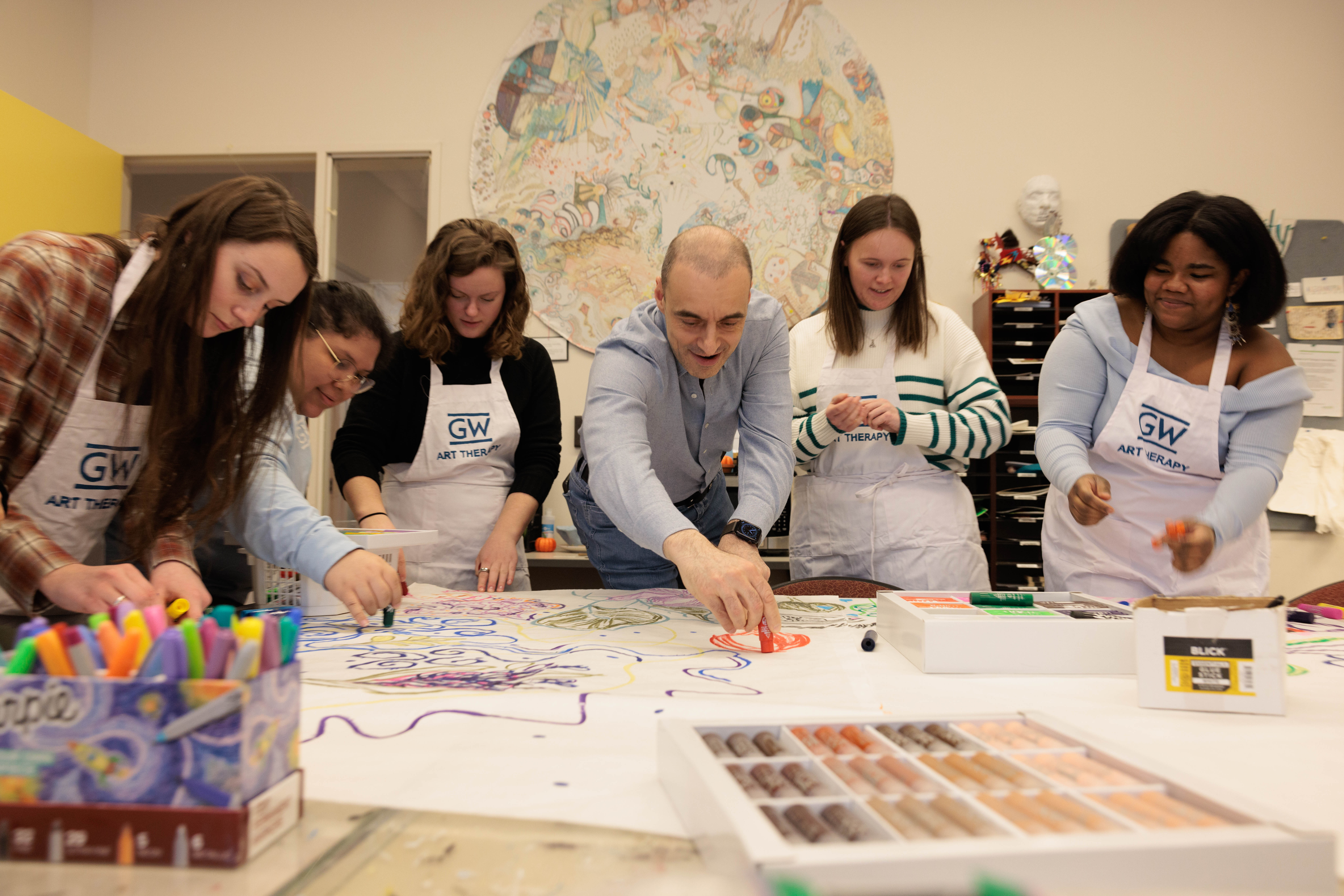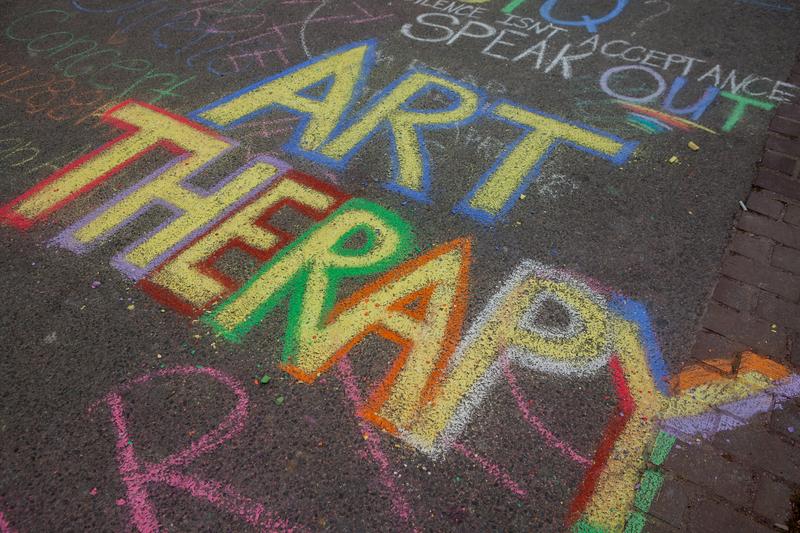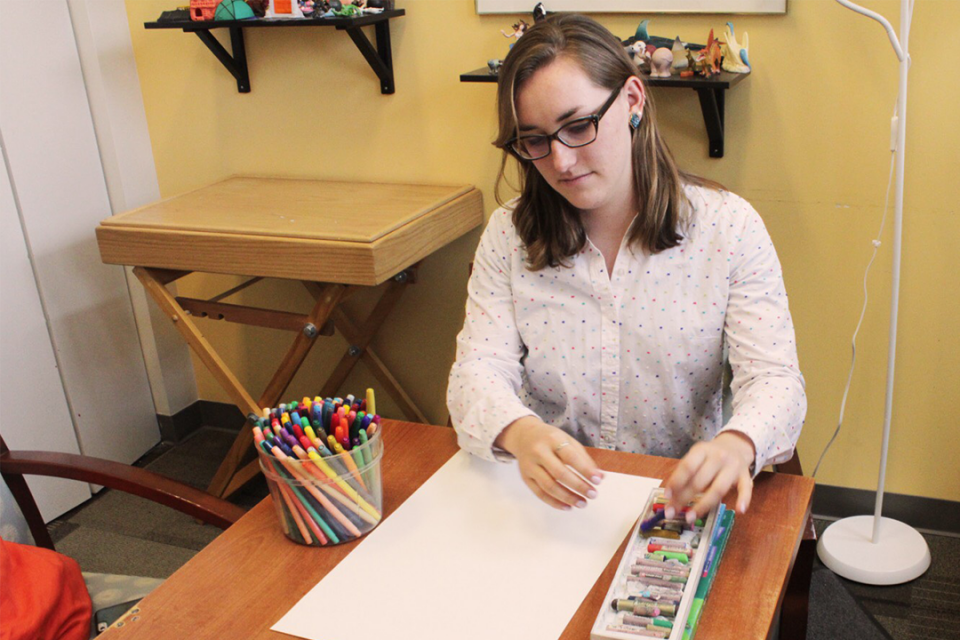During the worst of the pandemic, George Washington University parent Ulvi Kasimov knew he was not alone feeling the anxiety rooted in isolation and fear for his family’s health. Surely, the stress of the global shutdown’s de facto “house arrest” was harming our collective human psyche.
“The pandemic negatively impacted everyone, whether they realize it or not,” Kasimov said. “And there are not enough psychiatrists and psychologists in the world to address a problem of this magnitude.”
Instinctively, the prolific venture capitalist, passionate art collector and 2020 “Observer” Top 50 Most Influential Leader in the Art World, leaned into a natural extension of his entrepreneurial imprint on the global art community.
Kasimov decided to take a creative approach—literally—to improve wellness by supporting the growing need for credentialed art therapists. These mental health care professionals use concepts from psychology and counseling, but engage patients through active art-making as an alternative mode of communication and healing.
Support and promotion of art therapy globally is now the top corporate philanthropic initiative for .ART, the digital creative community hub and domain registry he founded with his wife, Reykhan. Launching their initiative with a $1 million endowment for graduate fellowships for students in GW’s Art Therapy Program, they recognized the critical need for financial support to attract and retain top students with a passion to serve.
Art therapy careers are rich in personal meaning and have significant social impact, but the educational path is rigorous and includes 900 hours of hands-on internships to prepare graduates to serve diverse client populations. Many professional opportunities are lower-paying positions in the nonprofit or government sector, so fellowships that reduce the burden of student debt are critical, noted Heidi Bardot, director of the art therapy program, which is part of GW’s Columbian College of Arts and Sciences.
“We are so grateful to the Kasimovs for this endowed fund that will support art therapy fellowships for generations to come,” Bardot said. “The intense time commitment of classes and internships, plus their own personal creative development, doesn’t leave any time for full-time students to have outside employment.”
GW opened one of the United States’ first art therapy master’s degree programs in 1971, and the Kasimovs want to elevate awareness of the broad applicability and potential to ease the strain on mental health services, especially in the public health system, of this relatively new field.
There is a critical, global demand for therapeutic effects of art, but many associate it with only leisure or fun, not as a serious pursuit that can be converted to well-being, Ulvi Kasimov explained.
Bardot notes art is a universal language, accessible to anyone. “If you don’t have the words to describe your feelings, you can draw them—even if people think they don’t have artistic talent,” she said. “It’s the process, not the product. People express themselves through their artwork. And art can soften any perceived stigma of therapy.”
Second-year graduate student Bethany Eddleman, who announced her intention to be an artist at 2 years old, chose GW for the ability to maintain her artistic identity yet be challenged by the science and learning to be an effective therapist. “Art has always been part of my life journey, so the catharsis of art making has always been available to me,” Eddleman said. “It can relieve so much stress and help you get through so many things in life.”
Eddleman has had hands-on experience through three internships, and currently enjoys building relationships with students with varying needs in a school setting. “Patients connect through art work,” she said. “Art breaks through walls, things just start to come out, and you can help them see they have options.”
As one of 10 children, Eddleman found financial support for her graduate studies to be key to her lifelong dream of a career combining art and helping people. “I’m going toward my passion,” she said. “I’m where I’m meant to be. A fellowship helps you not worry so much, or wonder if you can pay for the next semester, or if you will have to prolong your studies. When you have the funding you need, you are able to walk with more focus, passion and intention.”
Laura Mahon credits her scholarship with giving her the financial means to emigrate to the United States from Ireland to pursue her master’s in art therapy at GW, make new connections and explore her love for the creative arts therapy field. “My scholarship opened doors that are usually closed to low-income students,” she said. Mahon plans to work in the public health system after graduation.
Program graduate Seraiah Simmons, who taught art to marginalized and under-resourced communities in the public school system for five years, grew her commitment to art therapy as she witnessed students and families enduring psychological issues with only limited support and access to treatment, she said. Scholarships, stipends and a fellowship provided the means for her to pursue her educational calling, she added.
Simmons currently facilitates group art therapy sessions with children, adolescents and adults with ArtReach GW, a nonprofit organization to “change lives east of the river” in Washington, D.C. Her dream is to “create and lead my own therapeutic academy and center of the arts,” designing “curriculums that purposefully transform a variety of microcosms to impact society as a whole,” she said.
Kasimov has big plans to multiply fellowship support for more students, explore opportunities for other partnerships leveraging his .ART community and interdisciplinary applications, and expand use of these therapeutic techniques into non-traditional areas of need such as refugee camps.
“I want active interaction,” Kasimov said. “I’m not the old school ‘pledge a gift and say goodbye.’”
His .ART domain registry, with a mission to support the artistic community, project and strengthen members’ digital identities and generate value from art, has global reach with more than 230,000 users in 160 countries and corporate offices in D.C., New York, London and Beijing. Members include individual creators from everyday hobbyists to superstars in the visual and performing arts, writers, designers, musicians and more to institutional icons including the Louvre (louvre.art), LACMA (lacma.art), and Pixar (pixar.art).
“The .ART community will understand and embrace our message on art therapy,” Kasimov said.
GW’s Vice President of Development and Alumni Relations Donna Arbide applauds the Kasimovs’ efforts to change the world for the better.
“Ulvi and Reykhan are absolutely amazing GW parents and supporters that inspire us all,” she said, noting that the art therapy fellowship endowment is not their first seven-figure gift to the university. “As soon as they became part of our community, they reached out to us to see where they could have an immediate impact on global health.”
Last year, the Kasimovs made a $1 million donation to support bench-to-bedside medical research to help stem the spread of COVID-19.
President Mark S. Wrighton, who has made scholarship and fellowship support a top priority for the university, expressed his gratitude for their generosity.
“We appreciate the continuing support of the Kasimovs,” he said. “Scholarships and fellowships not only open doors to the transformative power of education to the individual recipient but also have ripple effects to their families and communities. This effect is particularly applicable to art therapists, who have great impact on their patients’ lives.”
Others interested in opening the doors of opportunity for a talented student interested in pursuing a master’s degree in art therapy are encouraged to contribute to the Kasimov Art Therapy Graduate Fellowship Fund.






